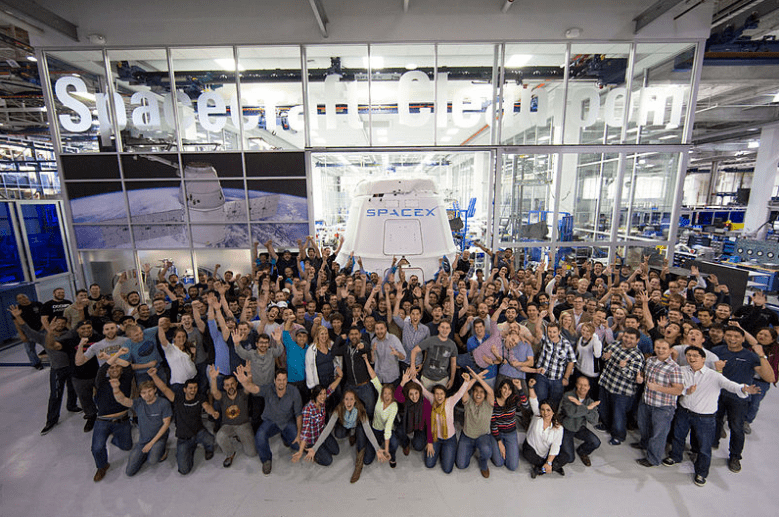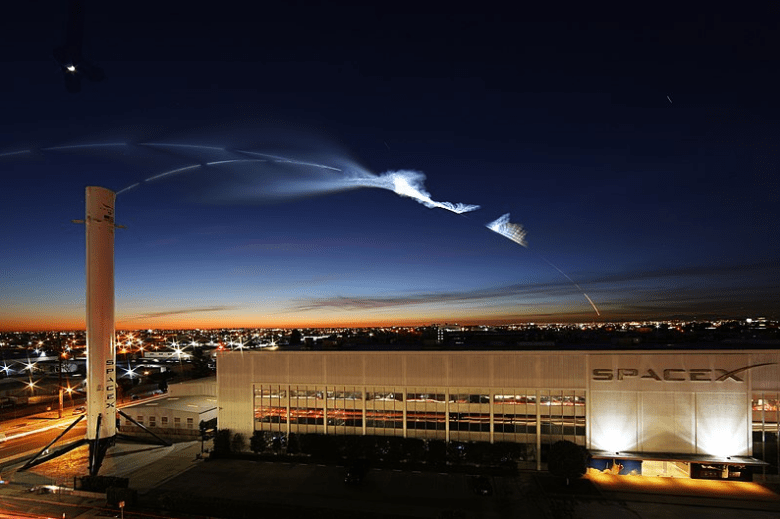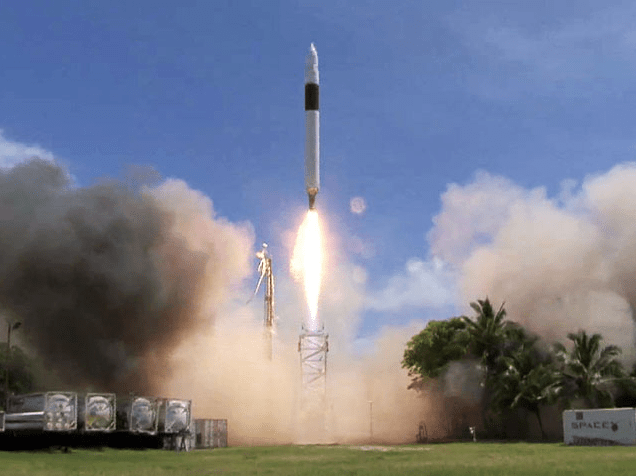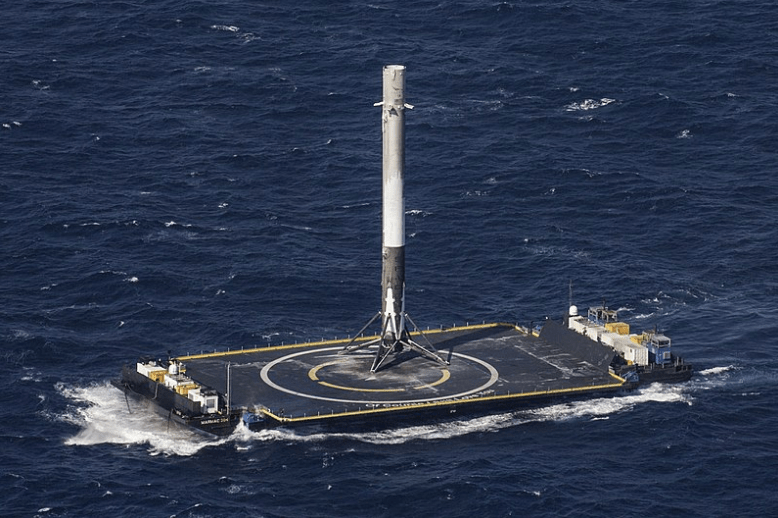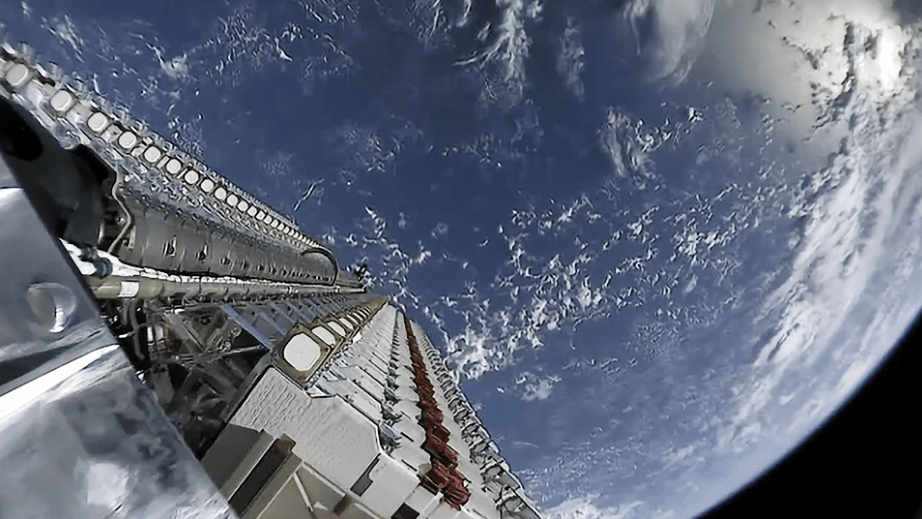Space X, founded by the tech billionaire Elon Musk in 2002, is a space company that came into being to colonize Mars.
With nearly two decades on, this company reigns the space industry with multiple wins on the board. It produced the first reusable rocket that landed back and launched the first autonomous cargo vehicle to the International Space Station (ISS), which no one else has achieved until now. Currently, it puts satellites in earth orbit, launches cargo rockets, and takes the crew to the ISS.
It also faced setbacks: for instance, when its cargo rocket en route to ISS exploded midway. However, Elon soon bounced back, achieving milestone after milestone till the present.
As keeping up with the plans of SpaceX for the cosmic worlds is confusing, here is our version of SpaceX simplified!
Who Owns SpaceX?
The owner of SpaceX is Elon Musk, who is a South African-born businessman and entrepreneur. With degrees in business and physics from the University of Pennsylvania, he has no history with rocketry. However, The Silicon Valley prodigy who made millions off internet startups wanted to spend his fortune on a stunt for reinvigorating interests in space exploration at NASA. He was not looking forward to starting a business then.
But as things did not go well planned or how destiny ordained it to be, Musk ended up finding his rocket empire in 2002. Musk made his initiate fortunes as the Co-founder of Paypal and Zip2. He sold Zip 2 for $307 million in 1999 and PayPal for $1.5 billion in 2002 to eBay, as reported by The New York Times. He spent a third of this reported $100 million to get the company going in the initial years.
All About SpaceX: From Origin to Present
2001–2004: Founding
In 2001, Elon Musk a project called Mars Oasis. His idea was to send a miniature greenhouse to Mars, making it the first farthest that life has ever traveled. He wanted to do this in hopes of increasing the public interest in space exploration and fund NASA. (Don’t forget to check our guide on NASA!)
Hence, in 2002, Musk and his friends traveled to Russia to buy refurbished intercontinental ballistic rockets. The idea was to get cheap space vehicles. However, the costs were too high, and the meetings failed, resulting in Musk returning empty-handed. On the flight back, Musk decided to start a company of his own for affordable rockets.
He partnered with Tom Mueller, and SpaceX was born. It is formally known as Space Exploration Technologies Corporation. The first headquarters were in El Segundo, California. The aims here were to increase space access at lesser costs.
2005–2009: Launch of Falcon 1
SpaceX developed its first orbital launch vehicle, Falcon 1, with private funding. Its cost was approximately $100 million. The first three launches between 2006 and 2008 of Falcon 1 resulted in failures that cost the company a lot. Musk was nearly bankrupt, and the company barely survived. However, things took a huge turn when the fourth attempt was a success in 2008!
NASA also awarded SpaceX with contracts of testing for taking crew and cargo to the ISS. It helped save the company, enabling Musk to launch Falcon 1 successfully again in the fifth attempt in July 2009. Now, the company started focusing on a much larger rocket, Falcon 9.
It also announced its plans to pursue human-rated commercial space programs. It, later on, became the Dragon spacecraft.
2010–2012: Falcon 9, Dragon, and NASA contract
After Falcon 1, a light orbital vehicle, SpaceX intended to proceed with an intermediate capacity vehicle Falcon 9. However, it decided to go with a much heavier one instead — the Falcon 9.
NASA accelerated its development, committed to taking flight services if the rockets were well. It started with the money, US$278 million, from the Commercial Orbital Transportation Services (COTS) program in 2006 by NASA.
Space X used the amount for producing Dragon spacecraft, Falcon 9, and test launches.
Falcon 9 launched in June 2010 with a Dragon Spacecraft Qualification Unit. The first operational Dragon spacecraft launch then followed in December 2010 as COTS Demo Flight 1, the Falcon 9 second flight. It was successful and returned to Earth safely after two orbits, completing all missions!
It produced these rockets once every three months then. In April 2011, SpaceX received a contract for integrating launch escape systems for Dragon to prepare it as a crew vehicle to the ISS. They then took over the entire crew transport in 2012. They launched an uncrewed flight test, a crewed flight test, and six operational missions following system certification.
In May 2012, SpaceX achieved a milestone by delivering the first cargo to ISS with Dragon C2+.
By late 2012, active testing began for their reusability program with low-altitudes and low-speed aspects of the landing technology.
2013–2015: Commercial launches and rapid growth
In 2013, SpaceX launched its first commercial mission for a private customer.
In 2014, it got nine contracts out of the 20 worldwide, making it a competitive company in the space industry. They also began to launch for US miliary payloads, which before was dominated by the United Launch Alliance (ULA).
By 2015, it raised US$1 billion in funding from Google and Fidelity in exchange for 8.33% of the company. It then announced the development of Starlink, their satellite constellation. It provided global broadband internet services. The same year, it approached the federal government for permission to test in hopes of launching 4,425 satellites!
The company also faced a setback. The Falcon 9 with the seventh ISS resupply mission exploded midway.
2015–2017: Reusability milestones
With Falcon 9, the company achieved a successful landing and recovery in 2015. They had the first successful landing on an autonomous spaceport drone ship in the Atlantic Ocean. By October 2016, they offered a flat 10% discount on a reused Falcon 9!
In September 2016, a Falcon 9 exploded, causing a four-month launch hiatus.
2017–2018: Leading global commercial launch provider.
In 2017, SpaceX had a 45% global market share for commercial launch contracts. It leads the industry with government contracts as well.
2019–present: Starship, Starlink, and first crewed launches
On 11 January 2019, SpaceX laid off 10% of its workforce to finance the Starship and Starlink projects. Tests for the construction of initial prototypes for Starship started in 2019 in Florida and Texas. All these moved to the new launch site in Texas later.
By May 2019, the company launched the first batch of 60 Starlink satellites. It would then become the world’s largest commercial satellite constellation the same year.
In 2020, two NASA astronauts (Doug Hurley and Bob Behnken) were successfully sent into orbit on a Crew Dragon spacecraft during Crew Dragon Demo-2. It is the first private company to send astronauts to the ISS.
Currently, SpaceX is in agreements with Google Cloud Platform and Microsoft Azure for providing on-ground compute and networking services by Starlink
The Takeaway
In our quest for the cosmic realms, SpaceX remains unrivaled with its achieved milestones. The company today continues to render commercial services and currently plans to achieve life on Mars. William Shatner, the man who first played Captain James T. Kirk, recently went up on a Space X launch.
Don’t forget to read about the Dragon Crew with Iconic events in the history of space exploration!

